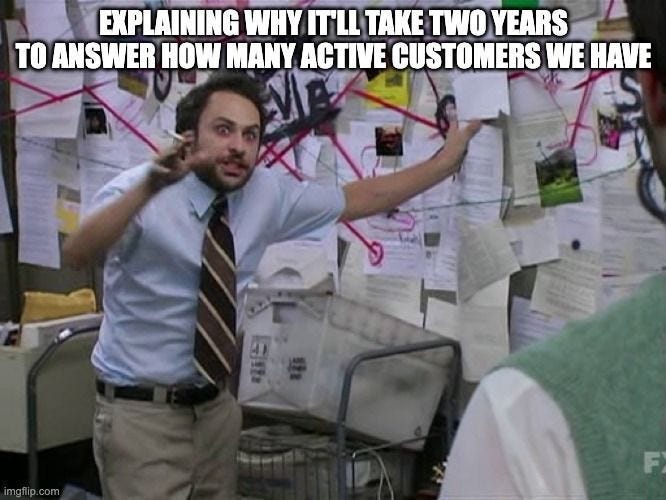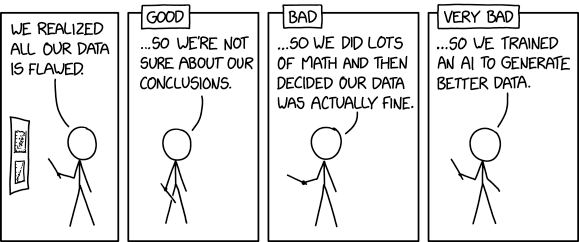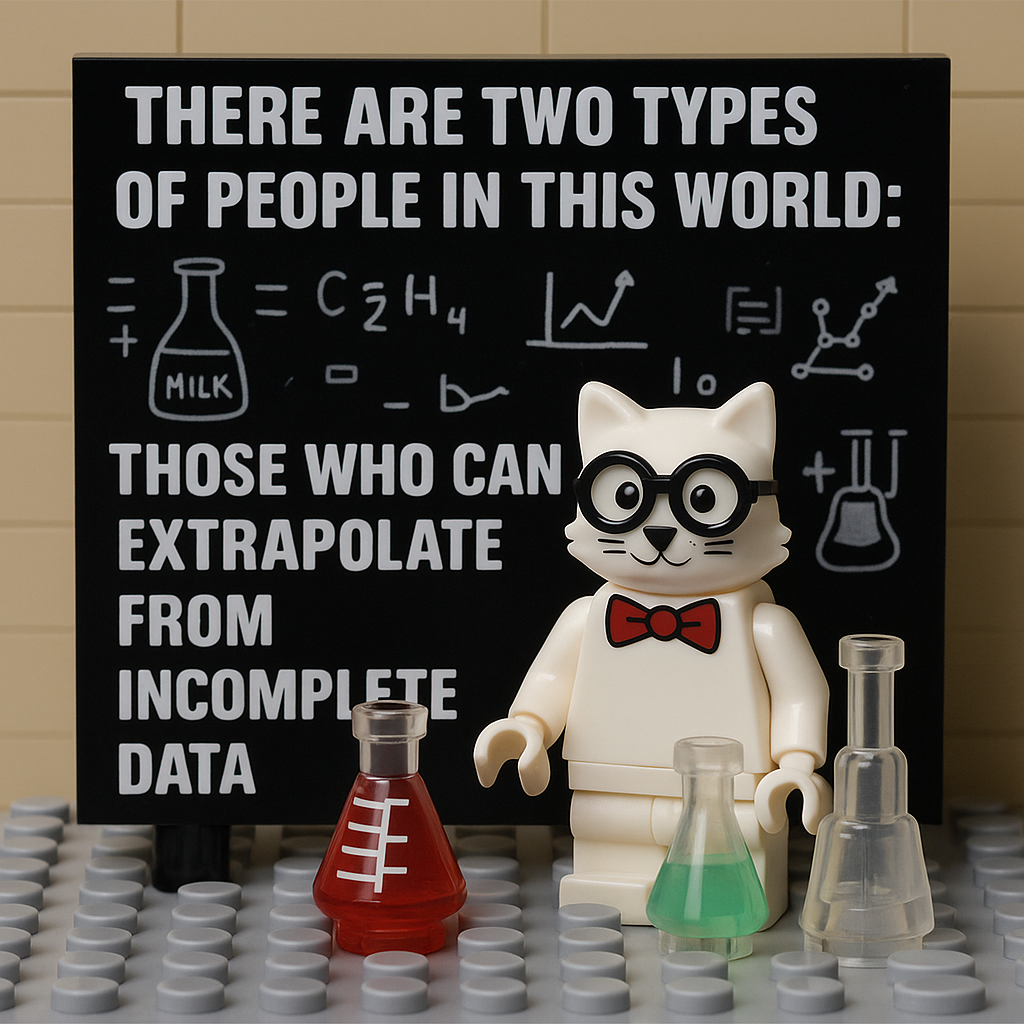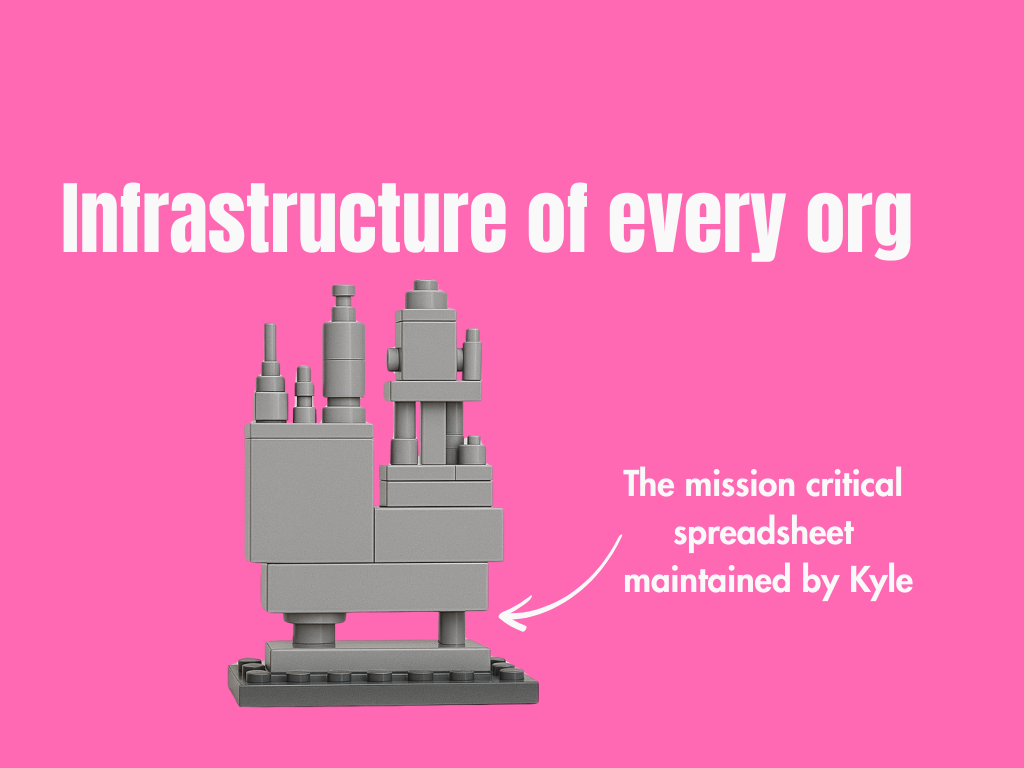From duct tape to data discipline
Where does the path toward a proper data strategy begin? With technology, processes, or mindset?
It’s a good question, which I received in a discussion on LinkedIn and it gets right to the heart of why so many organizations feel stuck.
Excel got us this far. but it won’t get us further
Excel filled the gaps. When systems were too rigid, when processes weren’t documented, when no one had the time or budget to do it properly: Excel stepped in. It’s fast, flexible, and widely understood. That’s precisely why it became the default platform for everything from planning and forecasting to reporting and reconciliation. It is the biggest LowCode Platform of all times. (😭)
But over time, flexibility becomes fragility. Business logic ends up buried in formulas. Data definitions evolve in isolation. Files multiply across mailboxes and shared drives, and nobody knows which version is the truth. What started as a quick fix becomes critical infrastructure—with no oversight, no ownership, and no backup plan.
We didn’t set out to build essential business processes on spreadsheets; it just happened. Now we’re trying to modernize, automate, and even build AI on top of that foundation. And it’s not holding up.
You can’t automate what you can’t trust
Every organization says they want to be data-driven. But that depends on one thing: trust. You can’t build automation, run analytics, or deploy AI unless your data is accurate, complete, consistent, and contextualized. More importantly, it needs to be owned. When a report is wrong, when a model fails, when an automation breaks: someone has to know why. And who that someone is, also needs to be known.
Spreadsheets rarely offer that kind of clarity. They’re opaque by design. There’s no version control, no lineage, and no governance. You can’t trace a number back to its source; you just have to trust whoever sent the file. That might work in a crisis. It doesn’t scale into strategy.
This isn’t just a tooling issue. It’s a question of confidence. And if you don’t trust the data, you won’t automate it. If you can’t explain the logic, you can’t expect AI to understand it.

So where does the shift begin?
There’s no single entry point. But you need a few conditions in place before anything meaningful happens.
You need some executive support: not a strategic program with three layers of steering committees, but enough cover to experiment without getting shut down the moment it gets uncomfortable. Someone up top needs to understand that doing nothing is the greater risk. That air cover gives teams the freedom to test, question, and improve.
But the shift doesn’t work if it’s only top-down. Real transformation starts when teams on the ground begin questioning the way things have always been done. Why is this file passed around by email? Why does it take a week to align numbers across teams? Why do three departments define active customer differently? These aren’t annoying details. They’re the fault lines that undermine every initiative built on top.

So, no, it’s not just mindset. And it’s not just process or tech. It’s a loop. You need room to act, courage to ask questions, and a willingness to rebuild some of the invisible scaffolding holding the business together.
From duct tape to data discipline
One of the most important mindset shifts is treating data not as a byproduct, but as a product.
Many organizations still run on data as a service: someone requests data, someone else extracts it, massages it, and sends it over, usually in a spreadsheet. It’s reactive and transactional.
Data as a product flips that. It means designing data with intent. It means treating datasets like reusable, reliable components with clear definitions, ownership, and documentation. Just like any product, they’re built to serve multiple users, not just one-off requests. They’re versioned, governed, and improved over time. That mindset unlocks scale.
Start with a lighthouse project
This isn’t a call for a grand data transformation program. Most of those fail under their own weight. What actually works is a lighthouse project. A focused, contained initiative that demonstrates what good can look like.
Pick a domain where data trust is low but business impact is high: customer records, service requests, onboarding metrics. Something visible. Then work through it end to end: Who owns it? How is it created? What decisions depend on it? Clean it up. Define it. Publish it. Govern it. Then show your work.
A good lighthouse doesn’t just solve a problem; it sets a precedent. It becomes the reference point for others. That’s how you build momentum without boiling the ocean.
The real cost of inaction
If you’re unsure where your organization stands, the warning signs are easy to spot. If Excel files are still passed around as the source of truth, if basic KPIs vary between teams, if no one knows who maintains the customer master list, or if AI pilots keep getting delayed because the data isn’t ready, you’re not dealing with a tech problem. You’re dealing with a credibility problem. And that won’t fix itself.
Build trust before you build AI
You don’t need to fix everything at once. But you do need to stop pretending that spreadsheets are good enough.

Start by identifying one fragile process, one risky spreadsheet, one misunderstood metric. Use it to show what’s broken. Then fix it. Not just with a better tool, but with clarity, ownership, and repeatability. Build your first real data product. And let it light the way 🔦.
If you want your AI to deliver value, your automation to scale, and your teams to make decisions based on something other than gut feeling, you need trust in your data. That trust isn’t built with dashboards. It’s built with discipline.
The tools will come. The governance will follow. But it starts with someone asking: Why are we still doing it this way? And it continues when someone else answers: We don’t have to.
You May Also Like
Still running on spreadsheets: the hidden cost of outdated infrastructure
Why your most “trusted” spreadsheet might be the biggest risk in your organization — and what to do about it.
Outsourcing your brain: cognitive offloading 'in the age of AI'
AI is helping us outsource more than ever. But when does smart support become mindless dependency and digital dementia? This blog explores the thin line between augmentation and abdication in …
I'm never going to financially recover from this
Too many Power Platform projects start with the wrong question: “Can we build this without premium licensing?” The real question should be: “What are we trying to achieve?” In this blog post, I break …





